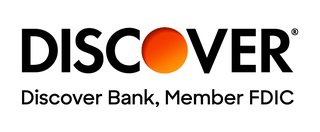‘Down to the Wire’: Savers Have Just Days to Lock in I Bond Rates Before They Fall
Money is not a client of any investment adviser featured on this page. The information provided on this page is for educational purposes only and is not intended as investment advice. Money does not offer advisory services.

Looking for a way to protect the value of your savings from inflation? Consider I bonds.
Experts say the government savings bonds still offer attractive rates for long-term savers, especially if the goal is to beat soaring prices. Right now, I bonds boast a 5.27% interest rate, but that’s set to change on Wednesday based on the latest inflation trends.
The overall rate of I bonds changes every six months. Since inflation has been moderating, the new rate for I bonds purchased in May will almost definitely be lower than it currently is. Those who purchase I bonds before the new rate is announced, however, will be able to lock in today’s attractive rate, and they will be able to guarantee their savings beat inflation for the next 30 years.
“We are down to the wire for I bond purchases,” Dave Enna, an I bond expert who operates the financial website TIPS Watch, says in an email. “I would say Monday, April 29, is the last ‘safe’ day to place an order” and get the 5.27% rate, he adds.
That's because I bonds purchased on Tuesday may run the risk of technically being issued by the U.S. Department of the Treasury past the deadline.
How to beat inflation by 1.3% for 30 years
The wonky government savings bond ascended in popularity two years ago when its interest rate topped 9% for the first time in I bonds history. The rate climbed in response to the highest inflation levels the United States has seen since the early ‘80s. Even though I bonds’ popularity has waned as inflation has moderated, financial experts say they’re still a great long-term option for protecting your money from soaring prices.
That’s by design. I bonds have two separate interest rates: a variable rate that changes every six months based on inflation trends and a fixed rate that is locked in for up to 30 years at the time of purchase. Together, they make up the so-called “composite” rate, which is 5.27%.
What makes now a unique time to buy I bonds is the 30-year fixed rate: 1.3%. It hasn’t been that high since 2006. Come May, both the variable rate and the fixed rate are projected to fall.
Enna expects the new composite rate to be around 4.27%, with a slightly lower fixed rate.
Even though the rates will change in May, people who get I bonds before then can nab the 5.27% rate for six months from the month of purchase. Once those six months are up, the I bond will switch to the newly announced variable rate in May (which should be 2.96%) on top of the guaranteed 1.3% fixed rate.
“They’re very useful for beating inflation,” says Randall Watsek, a financial advisor at Raymond James. “The 1.3% fixed rate is basically what you’re earning above the inflation rate.”
What to know about I bonds
While some financial experts refer to I bonds as essentially an inflation-protected savings account, the government bonds have quirks unlike most deposit accounts at financial institutions.
Foremost, people are limited to $15,000 of I bond purchases per year. Of that, there’s a $10,000 limit for electronic I bonds. The only way to reach the $5,000 limit for paper I bonds is with tax refund money that must be earmarked at the time of filing.
Another major caveat is that the money invested in I bonds can’t be withdrawn for one year (emergency notwithstanding). I bonds withdrawn within five years of purchase are hit with an early withdrawal penalty of the final three months worth of interest, similar to certificates of deposit (CDs).
Electronic I bonds are only purchasable through the U.S. government-run TreasuryDirect website.
That said, I bonds are tax-deferred, meaning no taxes are due until they are cashed out. Additionally, they are exempt from state and local taxes. Even the federal taxes may be waived if the money is being put toward qualifying higher-education expenses.
Inflation-insulated alternatives
Given that inflation has been hovering around 3.5% lately, there are several options for savers to beat inflation in the short term. Many high-yield savings accounts and money market accounts are boasting rates between 4% and 6%. It’s still possible to find short-term CDs with similar rates, too.
Watsek says he expects those rates to hold steady in the near future, but once the Federal Reserve lowers interest rates, the financial institutions offering those accounts can (and probably will) lower their rates in tandem.
“They could change any day,” he says.
By comparison, I bonds have predictable rate changes every six months and offer a fixed rate that won’t budge for 30 years (or until the I bond is cashed in).
In terms of guaranteed inflation protection by the government, I bonds really only have one peer, Watsek says. That’s TIPS, or Treasury Inflation-Protected Securities. Because TIPS aren’t subject to the purchase limits of I bonds, he says they are a solid option for folks who want to protect more than $10,000 per year from inflation.
While the goal is the same for both TIPS and I bonds — protecting the investment from inflation — the underlying mechanics are different. According to Enna, from TIPS Watch, TIPS are much more involved, and the ultimate yield is determined by market forces. Interest is paid out every six months depending on inflation (or deflation). Terms are five, 10 or 30 years, though they can be sold on a secondary market before maturity.
“First off, I want to state loudly that TIPS are for preserving wealth, not building wealth,” Enna wrote on TIPS Watch, noting that I bonds tend to be the more approachable option for most savers and investors.
Watsek, too, notes that I bonds have a “set-it-and-forget-it quality” that make them appealing.
Ultimately, when choosing where to stash savings, Watsek stresses that it’s up to the individual person’s situation: Specifically, he says, “Do you need liquidity now?”
If the answer is yes, it’s important to keep at least some emergency savings accessible, ideally in a high-yield savings account. Once that base is covered, Enna says I bonds can act as a “super-safe” second-tier emergency fund.
More from Money:
The Surprising Way Inflation Can Be Good for People With Debt
The Dow Is About to Cross 40,000 for the First Time Ever
Americans Have Never Been So Far Behind on Their Credit Card Bills





